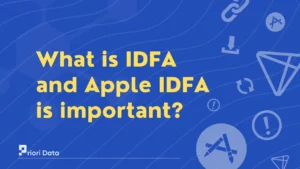Click validation is a process used to detect and prevent fraudulent clicks on online advertisements.
It helps ensure that clicks are from real humans with genuine interest, rather than bots, scripts or competitors trying to artificially inflate metrics or drain budgets.
Click fraud is a big issue in digital advertising, with some estimates suggesting up to 30% of all clicks are fraudulent.
This can have major impacts on campaign performance and return on ad spend. Click validation aims to tackle this problem.
How does Click Validation work?
There are a few main techniques used for click validation:
- IP Address Analysis – Looking at IP addresses associated with clicks can identify patterns of suspicious clicks. For example, lots of clicks coming from the same IP range may indicate bot activity or click farms. Comparing IP locations to advertiser targeting is another validation method – clicks should largely originate from the intended country/region.
- Click Timestamp Analysis – The timing and sequence of clicks is analyzed to detect unnatural patterns. Clicks that occur at millisecond speeds or highly regular intervals are likely bots/scripts rather than humans.
- Device Identification – The type of device and browser attributes are checked. Clicks from unknown devices or browser user agents known to be associated with bots can be flagged. Device data can also identify single devices submitting vast volumes of clicks.
- Behavior Analysis – Click fraud bots often exhibit behavior differing from natural user flows. For example, instantly clicking without browsing site content or illogical click sequences can be indicators of invalid traffic.
- Domain Verification – Click sources are verified to be legitimate sites rather than simply misdirecting users. Clicks with a referrer domain that does not match the landing page domain tend to be suspicious.
- Fraud Blacklists – Existing databases of IP addresses, domains and devices identified as being involved in click fraud are checked against as part of validation. Any matches are likely fraudulent clicks.
- Cookies and Caching – Cookies and cache checks help identify return visitors and avoid counting duplicate clicks from a single user. Bots don’t store cookies like real browsers.
Three kinds of fraud click validation protects against
1. Competitor Click Fraud
Where rival companies systematically click competitor ads to artificially deplete budgets. Validation techniques like IP analysis and behavior patterns can identify this activity.
2. Publisher Click Fraud
Dishonest publishers generate invalid clicks on their sites containing advertiser ads. This earns them revenue, wastes advertiser budget, and undermines campaign performance. Click validation provides independent verification to counteract this.
3. Malware and Bot Clicks
Bots and malware infect devices and then automatically generate clicks without any real user intent. These automated clicks can be detected through methods like device identification, timestamp analysis, and verifying click source domains.






